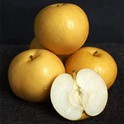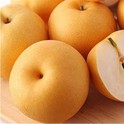Hey there, fruit lovers! As a yellow pear supplier, I've spent years dealing with these delicious golden gems. One question I get asked all the time is, "How can you tell if a yellow pear is ripe?" Well, you're in luck because I'm about to spill the beans on all the tips and tricks to help you pick the perfect ripe yellow pear every time.
First off, let's talk about why it's so important to know when a yellow pear is ripe. Ripe yellow pears are not only incredibly sweet and juicy but also have a smooth, buttery texture that makes them a delight to eat. Whether you're planning to enjoy one as a snack, add it to a salad, or use it in a dessert, a perfectly ripe yellow pear can take your culinary experience to the next level.
Now, there are a few different varieties of yellow pears out there, like the Golden Pear Fruit, the Honey Sweet Pear, and the Soft Sweet Pear. Each variety might have a slightly different ripening process, but the general rules still apply.
1. Check the Color
The color of a yellow pear can be a great indicator of its ripeness. When a yellow pear is unripe, it usually has a bright, almost fluorescent yellow color. As it ripens, the color will start to mellow out and become a more golden or buttery yellow. However, color alone isn't always a foolproof method. Some varieties might stay a bright yellow even when they're ripe, so you'll need to rely on other signs too.
2. Give it a Gentle Squeeze
This is probably the most well - known way to check if a pear is ripe. Gently press your thumb near the stem of the pear. If it gives in slightly under the pressure, it's likely ripe. But be careful not to squeeze too hard, or you might end up bruising the pear. If the pear is rock - hard, it's definitely unripe and will need a few more days to ripen. On the other hand, if it's too soft and mushy, it might be overripe.
3. Smell the Pear
A ripe yellow pear will have a sweet, fragrant smell. Hold the pear near your nose and take a whiff. If you can smell a lovely, fruity aroma, that's a good sign that the pear is ripe. If it doesn't have much of a smell, it might still be unripe. And if it has a fermented or unpleasant smell, it's probably overripe.
4. Look at the Stem
The condition of the stem can also tell you a lot about the pear's ripeness. If the stem is firmly attached to the pear, it might still be unripe. As the pear ripens, the stem will start to loosen up and might even come off easily when you give it a gentle tug. However, don't just rely on the stem alone, as this can vary depending on the variety and how the pear was handled.


5. Observe the Texture
Run your fingers over the surface of the pear. A ripe yellow pear will have a smooth, slightly waxy texture. If the skin feels dull or has a lot of bumps and bruises, it might not be at its best. Also, check for any soft spots on the pear. While a little bit of give near the stem is okay, large soft spots could mean the pear is overripe.
Ripening at Home
Sometimes, you might buy pears that are still unripe. That's no problem! You can ripen them at home. Just put the pears in a paper bag with a ripe banana or apple. These fruits release ethylene gas, which speeds up the ripening process. Check on the pears every day to see if they're ripe. Once they're ready, you can take them out of the bag and store them in the fridge to slow down the ripening and keep them fresh for a few more days.
Storing Ripe Pears
Once you've got your perfectly ripe yellow pears, it's important to store them properly. You can keep them at room temperature if you plan to eat them within a day or two. But if you want to keep them for longer, put them in the fridge. The cold temperature will slow down the ripening process and keep the pears fresh for up to a week.
As a yellow pear supplier, I take pride in providing the highest - quality pears to my customers. Whether you're a grocery store owner, a chef, or just someone who loves a good pear, I've got you covered. Our yellow pears are sourced from the best orchards and are carefully selected to ensure that you get the freshest and most delicious fruit possible.
If you're interested in purchasing our yellow pears for your business or just for your own enjoyment, I'd love to hear from you. We offer competitive prices, reliable delivery, and excellent customer service. So, don't hesitate to reach out and start a conversation about your pear needs. Whether you need a small quantity for your family or a large order for your restaurant, we can work together to make it happen.
In conclusion, telling if a yellow pear is ripe isn't rocket science. By using these simple methods of checking the color, giving it a gentle squeeze, smelling it, looking at the stem, and observing the texture, you'll be able to pick the perfect ripe pear every time. And if you need a great supply of yellow pears, I'm here to help.
References
- "The Complete Guide to Fruit Ripening." Fruit Science Journal, 2022.
- "Pear Varieties and Their Ripening Characteristics." Agricultural Research Institute, 2021.





